Juarez

Brief Synopsis
Cast & Crew
William Dieterle
Bette Davis
Paul Muni
Brian Aherne
Claude Rains
John Garfield
Film Details
Technical Specs

Synopsis
In 1863, Louis Napoleon of France, threatened with the loss of Mexico under its new president, Benito Juarez, decides to circumvent the Monroe Doctrine by instituting sovereign rule. Napoleon cleverly engineers an election that puts the unwitting Maximilian von Hapsburg on the Mexican throne. Upon his arrival in Mexico, the idealistic Maxmilian, who is accompanied by his wife Carlota, is puzzled by the absence of supporters, and soon discovers that his French advisors expect him to confiscate the lands that Juarez has returned to the Mexican people. Slowly realizing that he is the victim of a fraud designed to establish French supremacy in Mexico, Maxmilian refuses to confiscate the lands and refuses to issue a decree that would place repressive penalties on the rebels led by Juarez. Instead, Maximilian decides to abdicate, but Carlota convinces him that he must stay and deliver Mexico from its enemies. To accomplish this, he offers Juarez the position of prime minister, but Juarez will not compromise his belief in democracy, thus creating an unbridgeable gulf between the two. With the end of the American Civil War, the United States orders the French flag out of Mexico and sends aid to the rebel army. Juarez' vice president, Uradi, uses this opportunity to betray Juarez and seizes the munitions, thereby creating a split that places victory within Maxmilian's grasp. Just as Maxmilian is about to command his army, however, Napoleon orders all French troops out of Mexico, crushing any chance of victory. Enraged, Carlota returns to Paris to confront Napoleon, where she suffers a mental breakdown over her husband's plight. Meanwhile, Juarez wins back control of the rebels and captures Maxmilian and his loyal followers as they are about to make their last stand. Although arrangements have been made for his release, Maxmilian insists on remaining with his men, and after they are judged guilty, they face the firing squad together.

Director
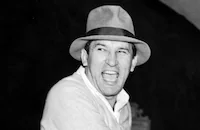
William Dieterle
Cast

Bette Davis
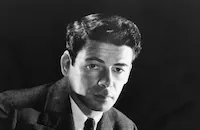
Paul Muni
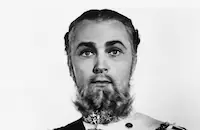
Brian Aherne

Claude Rains

John Garfield
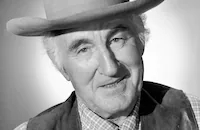
Donald Crisp

Joseph Calleia

Gale Sondergaard
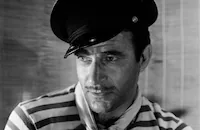
Gilbert Roland

Henry O'neill
Pedro De Cordoba

Montagu Love
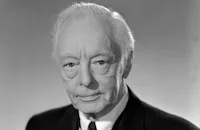
Harry Davenport
Walter Fenner Achille Fould
Alex Leftwich
Georgia Caine
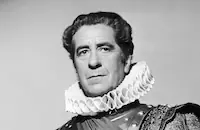
Robert Warwick
Gennaro Curci
Bill Wilkerson

John Miljan
Hugh Sothern

Fred Malatesta
Carlos De Valdez

Irving Pichel
Frank Lackteen
Walter O. Stahl
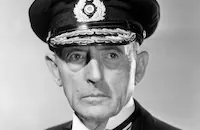
Frank Reicher

Holmes Herbert

Walter Kingsford
Egon Brecher
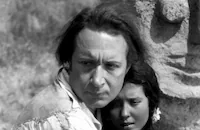
Monte Blue

Louis Calhern
Manuel Diaz
Mickey Kuhn
Lillian Nicholson
Noble Johnson
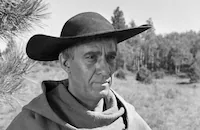
Martin Garralaga

Vladimir Sokoloff
Douglas Wood
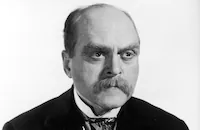
Grant Mitchell

Charles Halton
William Edmunds
Gilbert Emory
Francis Mcdonald
Frank Mayo
Crew
G. W. Alexander
Al Alleborn
G. W. Bernsten
Henry Blanke
Margaret Donovan
Ted Elsworth
Rudi Fair
Leo F. Forbstein
Hugo Friedhofer
Elmer Fryer
Tony Gaudio
Ida Greenfield
Anton Grot
Carl Guthrie
Elmer Haglund
Glen Harris
Stuart Higgs
George Hopkins
John Huston
Victor Johnson
Erich Wolfgang Korngold
Rydo Loschak
Warren Low
Aeneas Mackenzie
Lloyd Macleon
Orry-kelly
Pat Patterson
John Prettyman
Irving Rapper
Wolfgang Reinhardt
C. A. Riggs
Milan Roder
Ernesto Romero
Jack Sullivan
Claude Swanner
Jack L. Warner
Perc Westmore

Videos
Movie Clip





Trailer
Hosted Intro
Film Details
Technical Specs

Award Nominations
Best Cinematography
Best Supporting Actor
Articles
Juarez
Beginning in 1937, producer Hal Wallis and associate producer Henry Blanke began developing a film biography about the tragic Maximilian, Hapsburg Emperor of Mexico in the 1860s, and his wife, Carlotta, who were foisted on the Mexicans by Emperor Louis Napoleon of France. Led by the patriot Benito Juarez, the Mexicans revolted. Carlotta went mad, and Maximilian was overthrown and executed. The producers acquired a novel called The Phantom Crown, and a play about the couple, and writer Aeneas MacKenzie began doing research. Eventually, MacKenzie, John Huston, and Wolfgang Reinhardt wrote a script based on 372 volumes of research.
What happened next depends on which account of the film you are reading. According to Wallis' autobiography and a biography of Muni, the focus of the movie shifted to Juarez as the screenplay took shape. That's when the producers began to think of retitling it Juarez (1939) and casting Muni as "the Abraham Lincoln of Mexico" (other sources say it was always intended to be a Muni vehicle). John Huston claimed that Wallis pronounced the finished script one of the best he'd ever read, but once Muni saw it, he demanded changes so that he would have more dialogue, and brought in his brother-in-law to make those changes. Muni was powerful enough that the studio allowed him to make the changes. "Paul Muni really ruined Juarez," Huston claimed.
Whichever version one believes, this much is true: the story is peculiarly constructed, in that Juarez and Maximilian never meet. So Juarez was actually shot as two films, with the Maximilian-Carlotta story shot first. Then it was shown to Muni, and he made notes on further script changes before he shot the Juarez sequences. Then the two stories were intercut in the editing process. Some believe this anomaly in the screenplay ultimately doomed the film to failure, since its two protagonists never confront each other.
Paul Muni, as was his habit when playing a historical character, did his own meticulous research. Along with Wallis, Blanke, and Dieterle (who was once again directing), Muni traveled to Mexico to examine historical sites and learn as much as he could about Juarez. Muni even interviewed two very elderly survivors of Juarez's army to find out what the great man was like. Makeup artist Perc Westmore transformed Muni's face, even changing his bone structure with makeup to resemble Juarez . The transformation took three hours every day but studio head Jack Warner wasn't happy about Muni's look. "You mean we're paying Muni all this dough and we can't even recognize him?" he grumbled.
Bette Davis pleaded for the role of Carlotta, even though it was a minor part and not deemed worthy of the studio's most important female star. But the character had a wonderful mad scene, and Davis knew that she could play it superbly (and did). But in spite of Davis' showy histrionics, and Muni's stolid underplaying of the taciturn Juarez, acting honors went to Brian Aherne's affecting portrayal of the tragic Maximilian. It was Aherne's best performance, and earned him an Academy Award nomination as best supporting actor.
John Garfield, playing Porfirio Diaz, one of Juarez's fellow freedom fighters, appears only in a few scenes. Muni had known Garfield when both worked in theater in New York. When Juarez was in pre-production, Garfield was newly arrived in Hollywood, and Muni noticed his name on a list of contract players. Muni asked that Garfield be cast in a small role in Juarez. But by the timeJuarez went into production, Garfield had become an overnight star in Four Daughters (1938), and the studio thought he was too important for such a minor role. But Garfield wanted to do it, and with Muni backing him, he ended up playing Diaz. In the rushes, Garfield looked great, but his Bronx-Mexican accent was ludicrous. Some thought was given to replacing him, but he remained in the film because of his undeniable box-office clout. Garfield got the worst reviews of the film. Clearly, he was much too contemporary and urban for period roles, and would never play one again.
Because Juarez was a "prestige" film, the studio spared no expense. The historical accuracy of makeup and costume is as remarkable as the elaborate sets and art direction. Costume designer Orry-Kelly costumed more than 1,000 extras, as well as dozens of leading and supporting players. The art department built 54 huge sets, including whole villages, as well as castles and palaces in Europe and Mexico. The most impressive of these was Chapultepec Castle in Mexico City. Cinematographer Tony Gaudio's lighting design was stunning, particularly in Carlotta's mad scene, and he was nominated for an Academy Award.
Reviews for Juarez were respectful, but not really enthusiastic, although the performances of Muni, Davis and Aherne earned raves. Somehow the critics felt cheated by the structure of the film, and thought it was unbalanced. Of Muni's three biographical films, it was the least successful, and he never again made another movie biography. But critics then and now agree that whatever its faults, Juarez is worth seeing for its beauty, spectacle, fine performances, and the integrity with which it depicts history.
Producer: Hal B. Wallis
Director: William Dieterle
Screenplay: John Huston, Wolfgang Reinhardt, Aeneas MacKenzie (based on the novel, The Phantom Crown by Bertita Harding, and the play Juarez and Maximilian by Franz Werfel)
Editor: Warren Low
Cinematography: Tony Gaudio
Costume Design: Orry-Kelly
Art Direction: Anton Grot
Music: Erich Wolfgang Korngold
Principal Cast: Paul Muni (Benito Juarez), Bette Davis (Empress Carlotta von Hapsburg), Brian Aherne (Maximilian von Hapsburg), Claude Rains (Louis Napoleon), John Garfield (Porfirio Diaz), Donald Crisp (Marechal Bazaine), Gale Sondergaard (Empress Eugenie), Joseph Calleia (Alejandro Uradi).
BW-121m. Closed captioning.
by Margarita Landazuri

Juarez
Quotes
Trivia
Orry-Kelly designed costumes for Bette Davis which changed in tone as the film progressed; from white at the beginning, changing to gray in mid-film, and then to black at the end when she goes insane.
Extensive research was done to provide accuracy. The writers had a bibliography of 372 books. Art director Anton Grot made 3643 sketches from which 7360 blueprints were prepared for exterior and interior settings. A complete Mexican village was built on the Warner ranch. An English version of Werfel's play opened in New York City on 11 October 1926 and had 48 performances. The cast included Alfred Lunt and Edward G. Robinson.
Notes
The working title of this picture was The Phantom Crown. A pre-production news item in Hollywood Reporter notes that the picture was titled Maximilian and Carlotta until the suspension of Bette Davis caused the studio to decide to change its production plans from a co-starring vehicle to a vehicle for Paul Muni. The title was then switched to Juarez to reflect the change in focus. Davis eventually was re-written into the story. The CBCS for the film indicates that Charles Middleton was originally set to play the role of Carbajal. A production still for the film illustrates that actress Gail Page tested for the role of "Carlotta." According to the Variety review, the picture was shot on Eastman's new high speed film. The film originally ran fifteen reels, and Warner Bros. considered cutting it into two pictures. The Mexico City scenes were filmed in Calabasas, CA.
Warner Bros. files at the USC Library add the following information about the production: the studio had commissioned an original script, hoping that they would not have to purchase the Franz Werfel play to make the film. However, the studio lawyer advised producer Henry Blanke that the similarities between the script and the play were so strong that the legal department felt the studio would be subject to an infringement action. After much analysis, the studio purchased the rights to the play. The picture represented Warner Bros. most ambitious project to date. According to the production files, every detail was exhaustively researched for historical accuracy. The files contained long lists of reference books in both English and Spanish. Press releases refer to the film's extensive research. According to modern sources, the writers had a bibliography of 372 volumes, documents and period photographs. Art director Anton Grot drew 3,643 sketches from which engineers prepared 7,360 blueprints for the exteriors and interiors of the settings. A complete Mexican village was built on the Warner Ranch in Calabasas, CA.
News items in Hollywood Reporter add that to promote the film in South and Central American countries, Warner Bros. arranged a radio broadcast in which representatives from Mexico, Chile, Costa Rica, Brazil and the Pan American Union discussed the picture. Warner Bros. also held a special showing for the president of Mexico.
Materials in the Warner Bros. Files note that shortly before work began on this film, a Mexican producer named Miguel C. Torres began shooting a film entitled Maximilian and Carlotta starring Conrad Nagel. Warner Bros. advised Torres that they owned all motion picture and collateral rights to the Werfel play and asked him to refrain from using the title Juarez and Maximilian. Lacking money to finish his picture, Torres approached Harry Cohn about distributing the film. To end the threat of another company distributing Torres' film before they could release Juarez, Warner Bros. picked up the film and retitled it The Mad Empress (see below). Brian Aherne was nominated for an Academy Award in the Best Actor in a Supporting Role category.

Miscellaneous Notes
Released in United States Winter January 1, 1939
Released in United States Winter January 1, 1939















